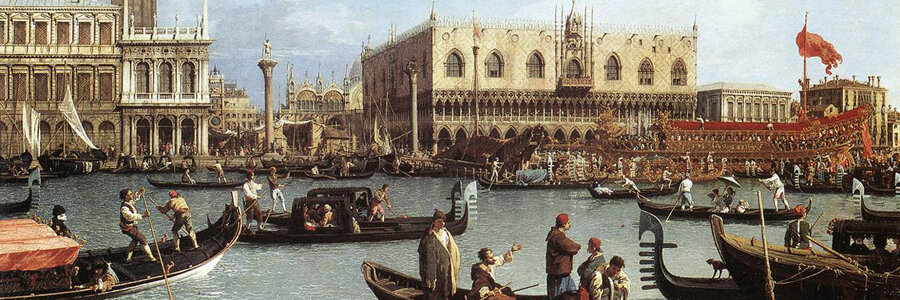
Readers of this blog may wonder where the manuscripts described on our web site, www.textmanuscripts.com end up – who buys our treasures? The answer is as varied as the manuscripts themselves. There are certainly private individuals who purchase medieval manuscripts, but most of our text manuscripts are acquired by the libraries of universities and colleges in the United States, Canada, Europe, and beyond – even in Australia.

Our previous guest blog, “From Seville to Sydney: The Re-discovery of a Manuscript’s Missing Pair” by David Andrés-Fernández (Spain) and Jane Morlet Hardie (Australia), discussed a manuscript now at the University of Sydney’s Fisher Library. This is an excellent time to re-visit their blog, since a volume about four Processionals in their collection is now in press: David Andrés Fernández. Mapping Processions: Four Sixteenth-century Spanish Music Manuscripts in Sydney, edited and with a foreword by Jane Morlet Hardie, Canada, The Institute of Mediaeval Music, 2018. As Jane says, “ … Processions/Processionals are very sexy just now, and David is a terrific scholar. I think it’s a bit of a game changer in the area, and his work on the Seville books is just great.” We are looking forward to the publication!
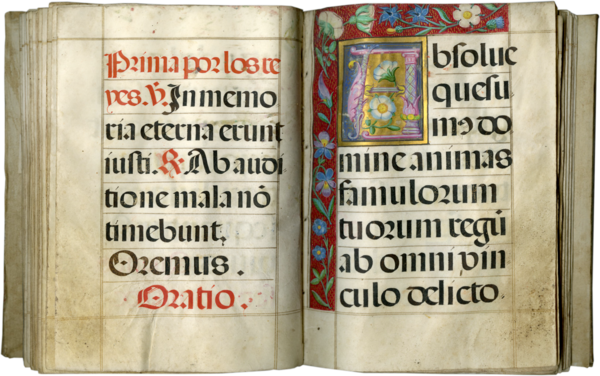
A resplendent opening of RB Add. MS 406 Deane, formerly TM 769, ff. 28v-29
Today we are looking at one of our manuscripts that found its way to Los Angeles. The Department of Special Collections of the Charles E. Young Research Library at the University of California at Los Angeles acquired TM 188 from Les Enluminures in 2008; it is now UCLA Library Special Collections MS 170/726.
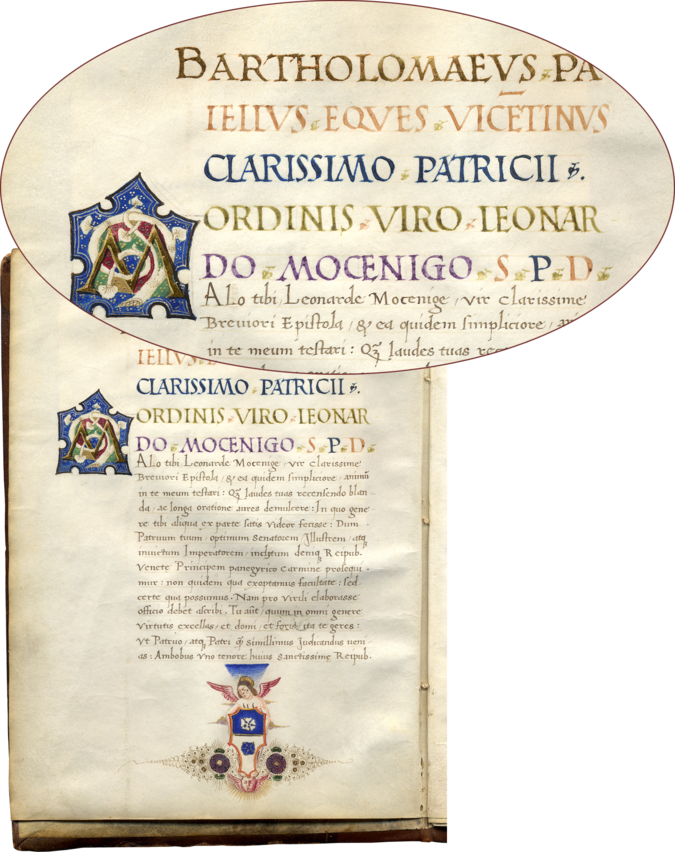
UCLA Library Special Colelctions, MS 170/726, f.1v
Readers of this blog are familiar with the descriptions of our manuscripts on textmanuscripts.com – at least we hope you are! We take great pride in how we describe the text manuscripts we offer for sale; every manuscript is studied carefully, and described in considerable detail. When you buy a manuscript from Les Enluminures, you have a very good idea of what you are getting, and why it is interesting. But as any cataloguer will tell you, we can’t, and don’t, discover everything – and of course, that is what makes manuscripts so exciting.
UCLA Library Special Collections MS 170/726 is an elegant humanist codex copied in the Veneto, almost certainly in Padua, c. 1474-1476. It is not a very large manuscript, measuring about 205 x 152 mm. (that is, about 8 x 6 inches), with 12 folios, or 24 pages. And it is without a doubt a lovely book, copied on high-quality parchment in a beautiful script by a skilled scribe,
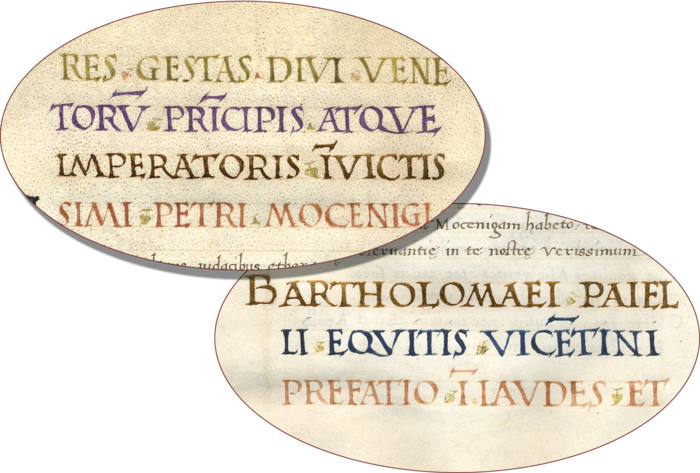
with lovely white-vine initials in the northern Italian style.
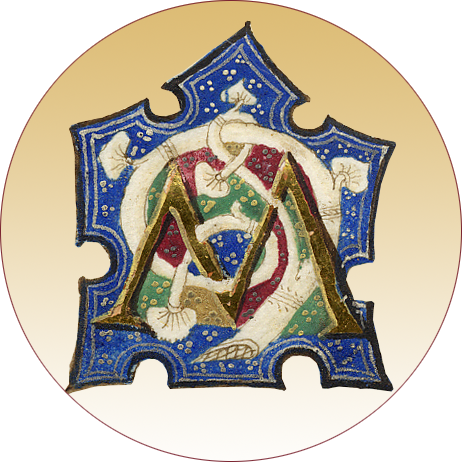
The text is by Bartolomeo Pagello (1447/48-c. 1526), a humanist renowned for his elegant letters and Latin works in verse, including the panegyric in this volume. (A panegyric is an extended poem of effusive praise, a literary form popular in Antiquity that was revived during the Italian Renaisssance). Pagello’s poem praises Pietro Mocenigo, the captain-general of the Venetian fleet against the Turks from 1470-1474, and doge of Venice from 1474 until his death in 1476. We know from its text that it was composed while Mocenigo was in office.
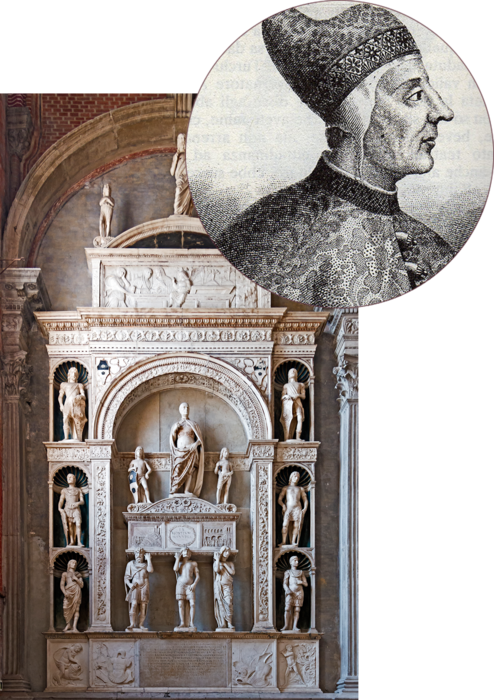
The tomb of Pietro Mocenigo in the church of San Giovanni and Paolo in Venice
UCLA knew all this when they purchased the manuscript. And they also knew that this text was quite rare, surviving in very few manuscripts. Its nineteenth-century editor based his edition on Pagello’s working copy of the text–an autograph–now in Vicenza (Biblioteca Bertoliana MS 487). He didn’t know about the copy now at UCLA.
And, as it turns out, there was more to discover. The UCLA manuscript is a presentation copy, dedicated to Leonardo, the ten-year old son of Pietro Moncenigo.
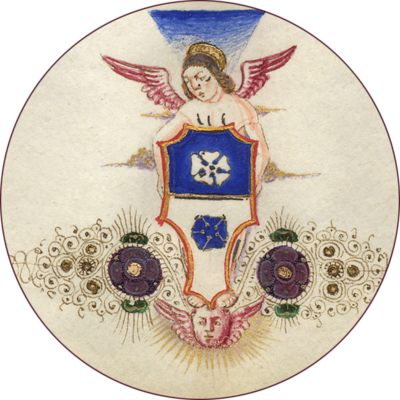
UCLA Library Special Colelctions, MS 170/726, f.1v (detail)
The opening and closing words (apart from the dedication, which of course is unique to the UCLA copy), are identical to the Vicenza manuscript, but its text is not. Scholars at UCLA, Richard and Mary Rouse, together with Éloïse Lemay, made the very important discovery that the text of the UCLA manuscript is a unique, hitherto unknown, recension of Pagello’s Panegyric. It is rare indeed to have both the original working copy of a text by a sixteenth-century author and a later version of the same text with substantial authorial revisions.
This manuscript is many things: a wonderful example of a book from Renaissance Italy of interest for its humanistic script, decoration, and early binding; a text with ties to three figures important in the history of Venice, Bartolomeo Pagello, Pietro Moncenigo, and his son, Leonardo; and a very rare and exciting opportunity to uncover the literary process of a Renaissance author.
Interested in learning more? In 2016 the library published a wonderful monograph on this new acquisition: Richard Rouse, Mary Rouse, and Éloïse Lemay, Bartolomeo Pagello's Panegyric of Pietro Mocenigo: a Unique Recension (UCLA MS 170/726), UCLA Library Publications, Los Angeles, 2016, summarizing the results of their research, and presenting a complete facsimile of the manuscript, a transcription of the text, and an English translation.
As a final note, people often ask me how long descriptions of our manuscripts are available after they are sold – and the answer is that sold items remain on our site in the archives with the complete description and images. Choose “all items” when you search, and you will find a treasure trove of information for scholars and manuscript lovers worldwide (at the time of this blog post, 825 manuscripts!)
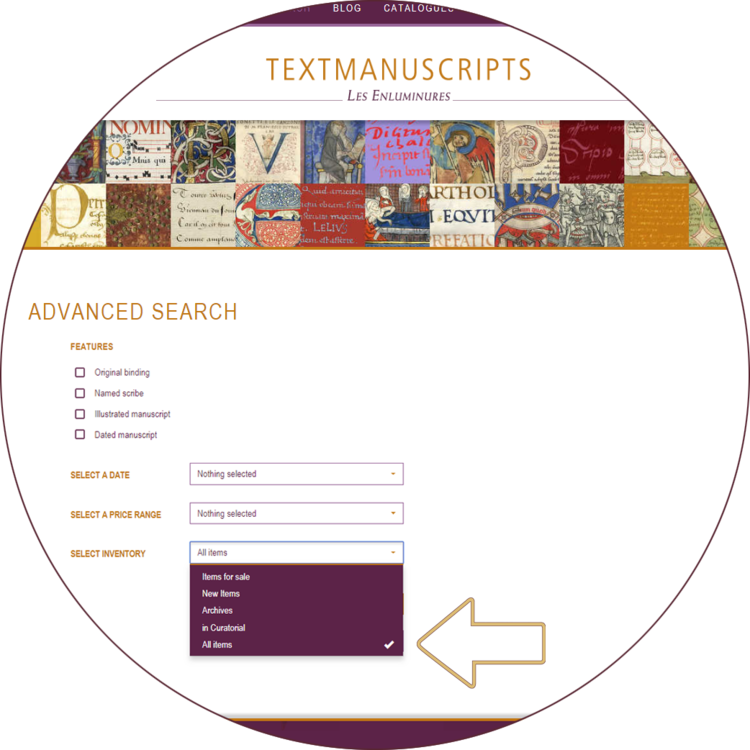
You can now receive periodic blog post updates by submitting your email up above in “Follow Us.”


